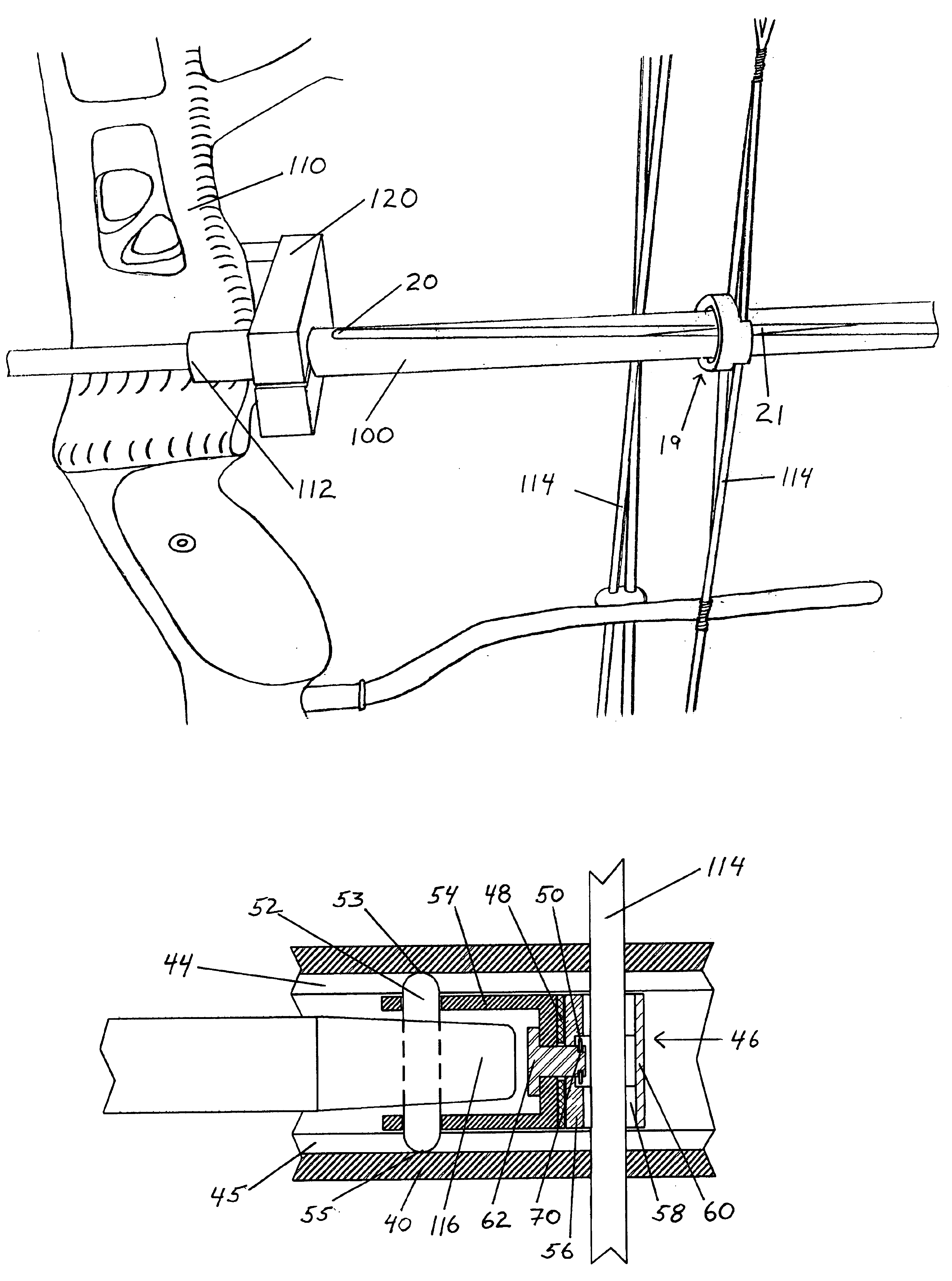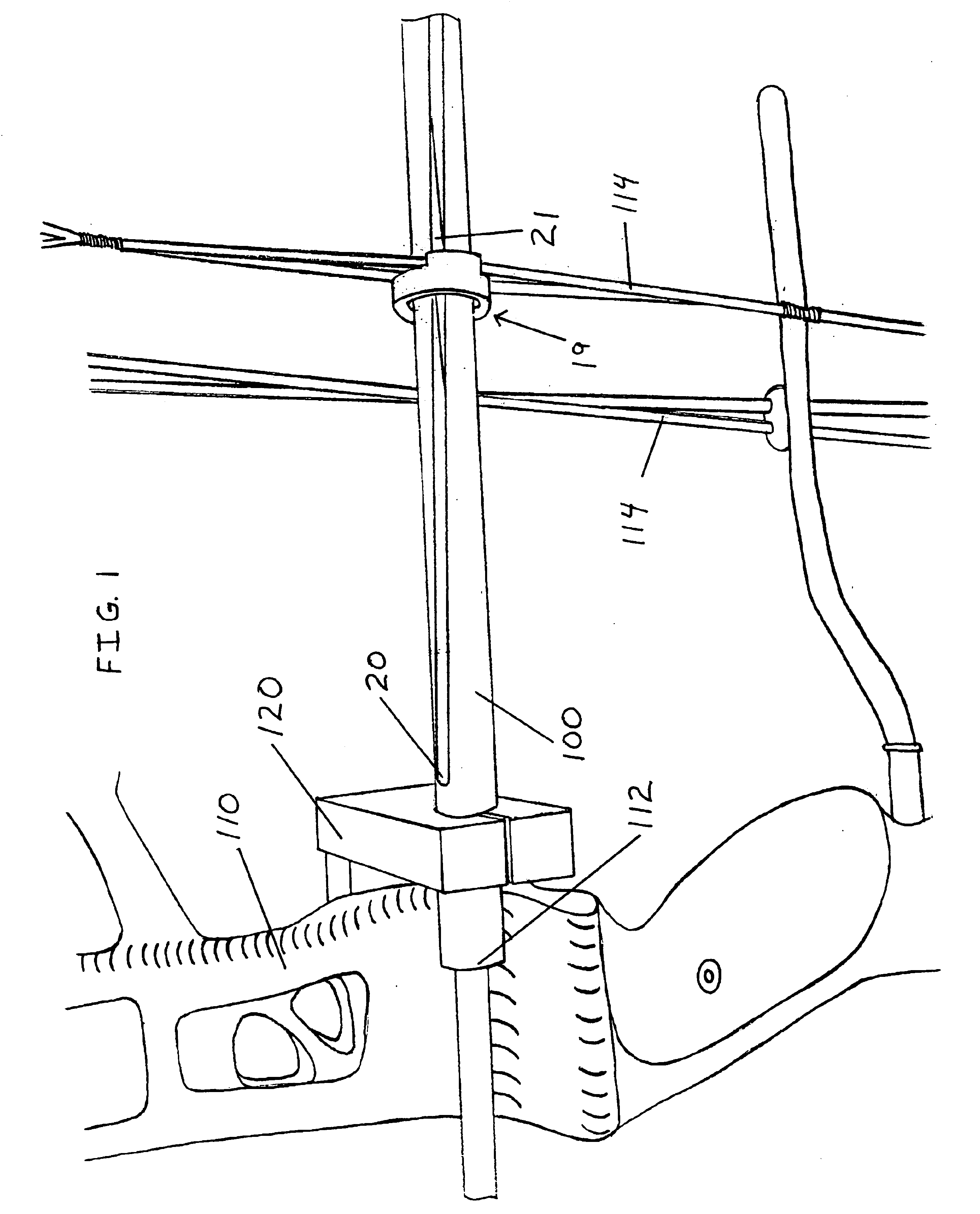Archery arrow rotation prior to separation from bow
a technology of arrows and bows, applied in the field of archery bows or crossbows, can solve the problems of unnecessary drag on the rotating arrow, the arrow is more prone to deviating from the intended flight path, and the energy required to rotate the arrow shaft due to prior art arrow rotor drag robs valuable forward velocity through all phases of flight, so as to increase the impact energy, the effect of simple bow tuning
- Summary
- Abstract
- Description
- Claims
- Application Information
AI Technical Summary
Benefits of technology
Problems solved by technology
Method used
Image
Examples
Embodiment Construction
The arrow rotation device of the present invention substantially reduces the described disadvantages of prior art arrow rotation systems by inducing a rotation on the arrow shaft prior to leaving the bow and entering free flight. Accuracy improves because unwanted influential forces can be overwhelmed by beneficial conservation of angular momentum forces by causing the arrow to rotate before leaving the bow. Because fletching can be eliminated or downsized, other resultant advantages follow. Improved trajectory due to reduced drag, reduced influence due to cross winds, better down range velocity, and impact force, are among the more substantial improvements.
FIG. 1 is a perspective view of the diametrically opposed, helically slotted spin tube arrow rotation device for archery bow. By utilizing the existing standardized arrow rest mounting point commonly located on the riser of bows, the arrow rotation device is easily adaptable to any existing bow. A spin tube-to-riser mount 120, ri...
PUM
 Login to View More
Login to View More Abstract
Description
Claims
Application Information
 Login to View More
Login to View More - R&D
- Intellectual Property
- Life Sciences
- Materials
- Tech Scout
- Unparalleled Data Quality
- Higher Quality Content
- 60% Fewer Hallucinations
Browse by: Latest US Patents, China's latest patents, Technical Efficacy Thesaurus, Application Domain, Technology Topic, Popular Technical Reports.
© 2025 PatSnap. All rights reserved.Legal|Privacy policy|Modern Slavery Act Transparency Statement|Sitemap|About US| Contact US: help@patsnap.com



